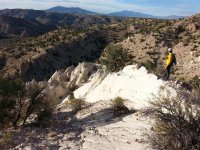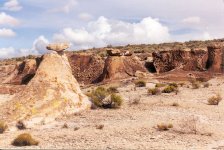gunshow70
Greenie
Hi! While predator hunting in Nevada I came across an area with large white ash cones 30 to 45 feet high. Someone had dug a hole maybe 8 feet by 8 feet straight down for 25 feet at it's base. I don't know what they were looking for and it has always been a mystery to me. There is a lot of old volcanic activity up there, with black rock and then this bright white area is such a stark contrast. There also a few walls of this white ash or whatever it is, with hundreds of holes carved into it 1 foot to 3 feet wide and 2 to 3 feet deep. I have little geological knowledge but love treasure hunts, can anyone give me a heads up as to what prizes might still be there.









